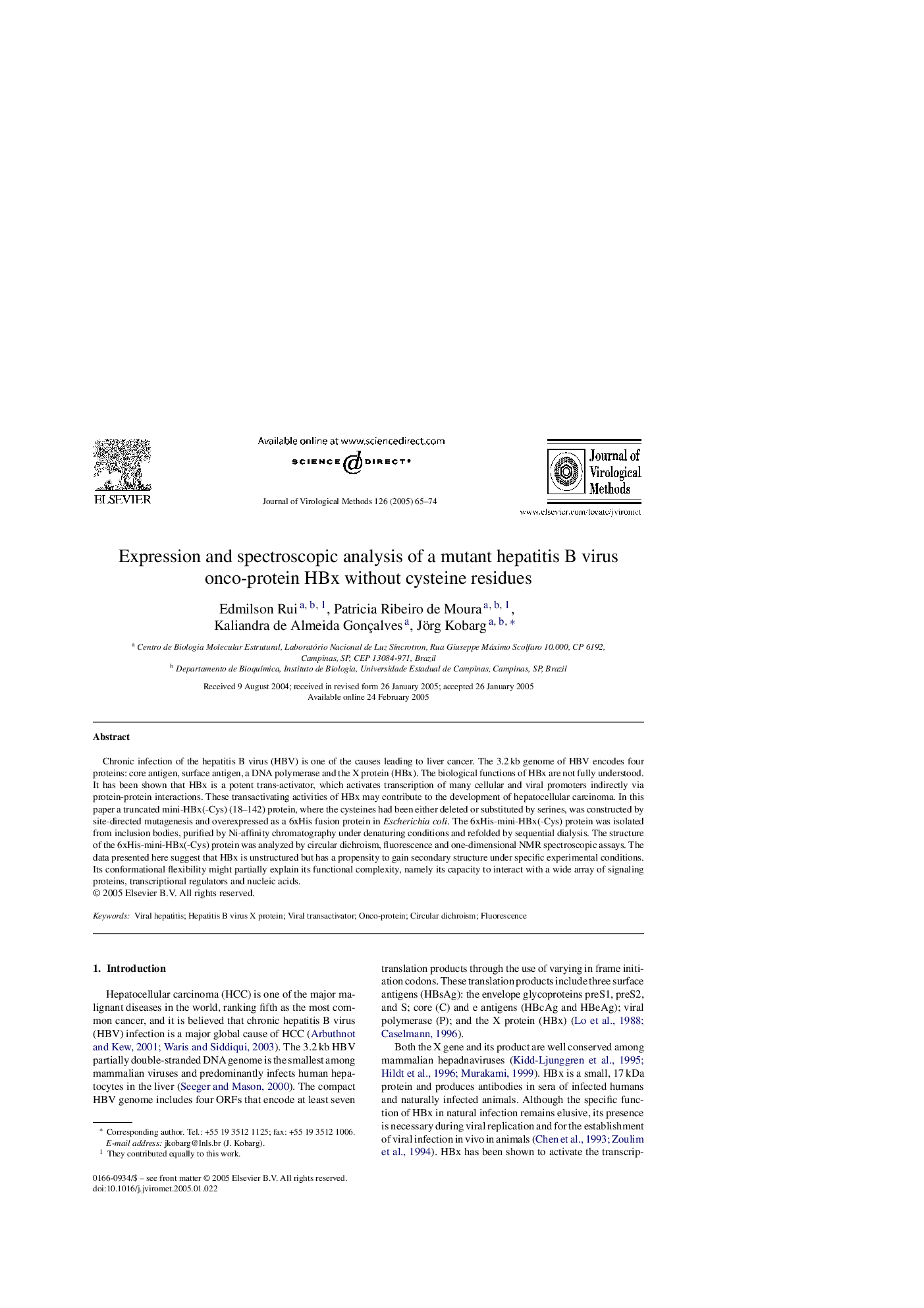| Article ID | Journal | Published Year | Pages | File Type |
|---|---|---|---|---|
| 9279551 | Journal of Virological Methods | 2005 | 10 Pages |
Abstract
Chronic infection of the hepatitis B virus (HBV) is one of the causes leading to liver cancer. The 3.2Â kb genome of HBV encodes four proteins: core antigen, surface antigen, a DNA polymerase and the X protein (HBx). The biological functions of HBx are not fully understood. It has been shown that HBx is a potent trans-activator, which activates transcription of many cellular and viral promoters indirectly via protein-protein interactions. These transactivating activities of HBx may contribute to the development of hepatocellular carcinoma. In this paper a truncated mini-HBx(-Cys) (18-142) protein, where the cysteines had been either deleted or substituted by serines, was constructed by site-directed mutagenesis and overexpressed as a 6xHis fusion protein in Escherichia coli. The 6xHis-mini-HBx(-Cys) protein was isolated from inclusion bodies, purified by Ni-affinity chromatography under denaturing conditions and refolded by sequential dialysis. The structure of the 6xHis-mini-HBx(-Cys) protein was analyzed by circular dichroism, fluorescence and one-dimensional NMR spectroscopic assays. The data presented here suggest that HBx is unstructured but has a propensity to gain secondary structure under specific experimental conditions. Its conformational flexibility might partially explain its functional complexity, namely its capacity to interact with a wide array of signaling proteins, transcriptional regulators and nucleic acids.
Related Topics
Life Sciences
Immunology and Microbiology
Virology
Authors
Edmilson Rui, Patricia Ribeiro de Moura, Kaliandra de Almeida Gonçalves, Jörg Kobarg,
